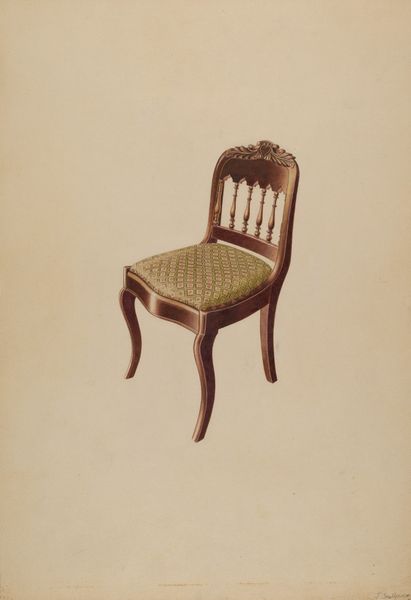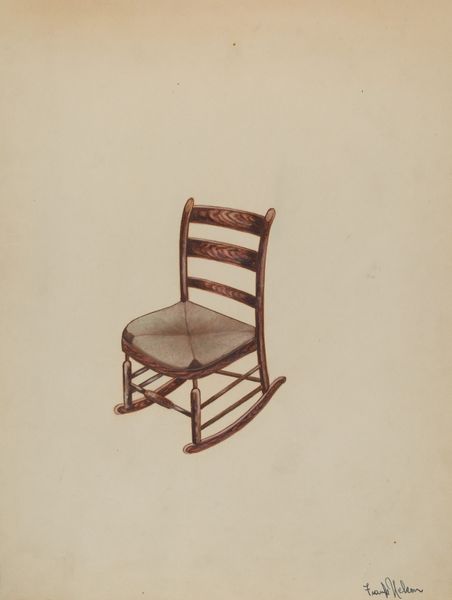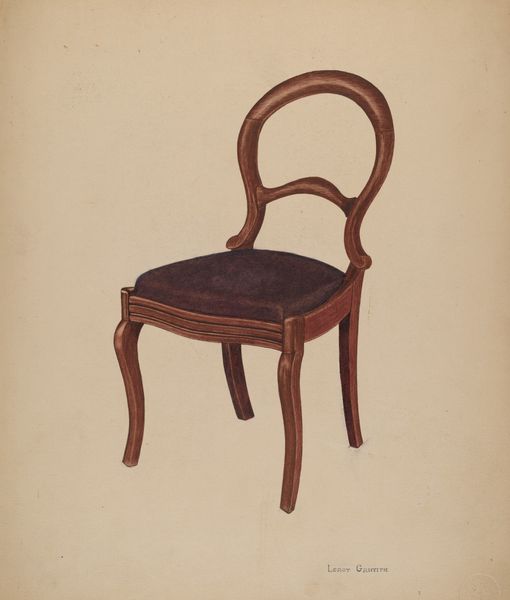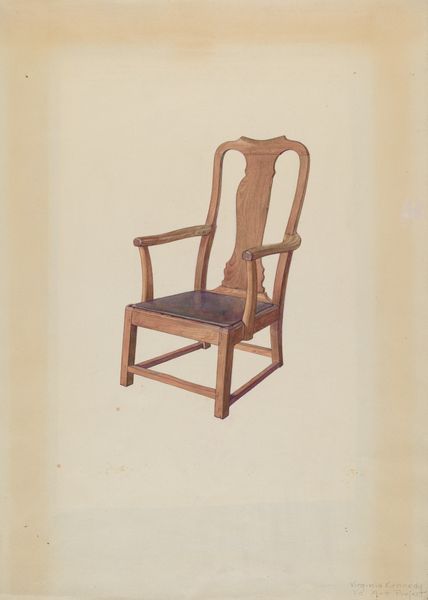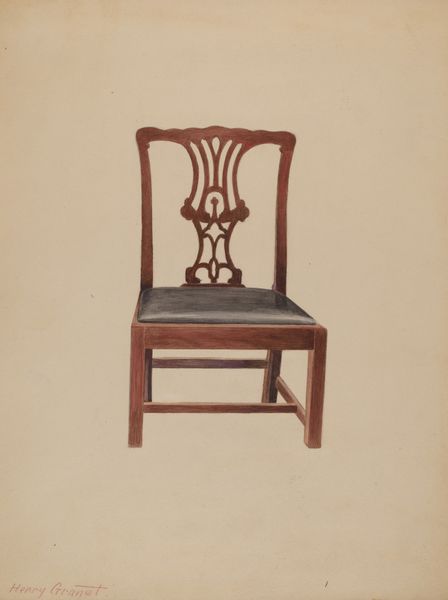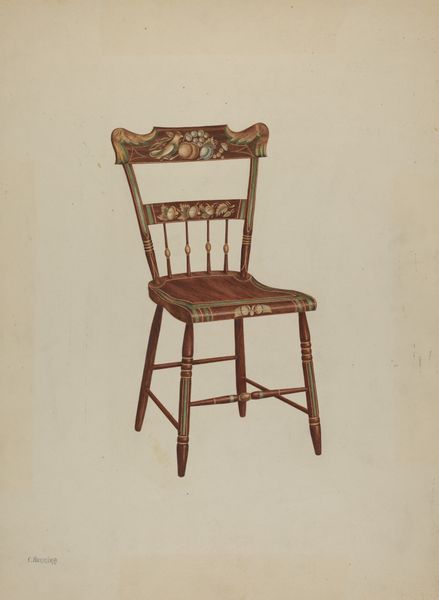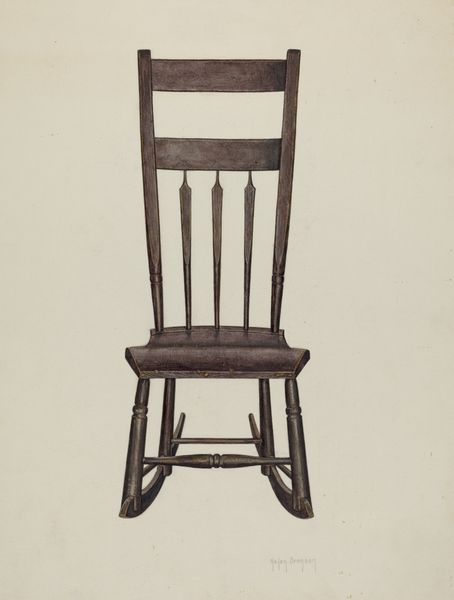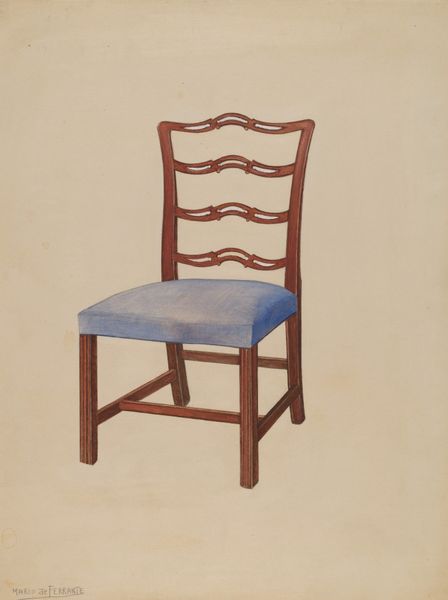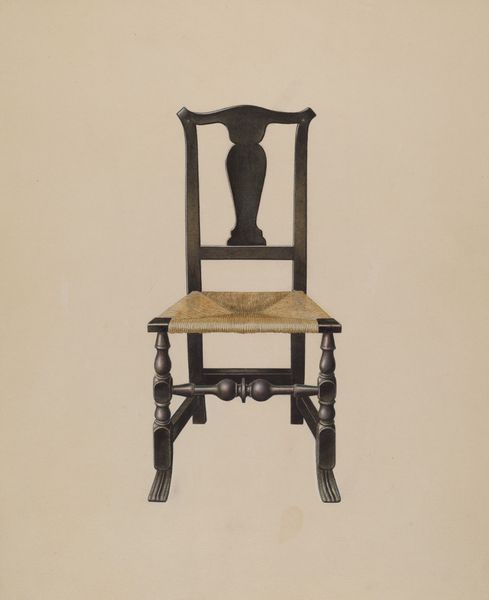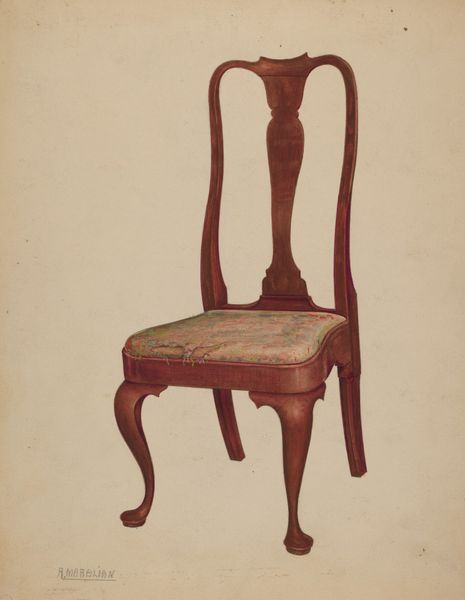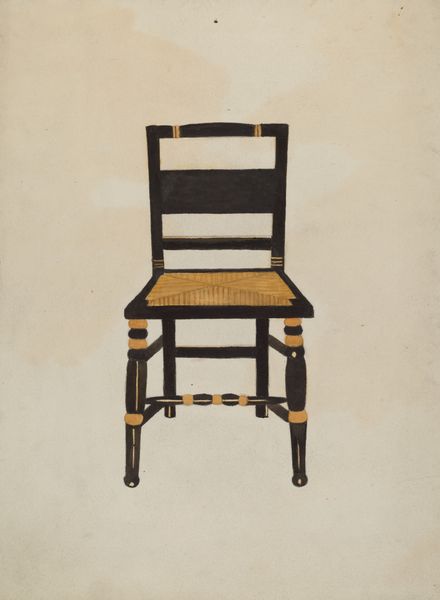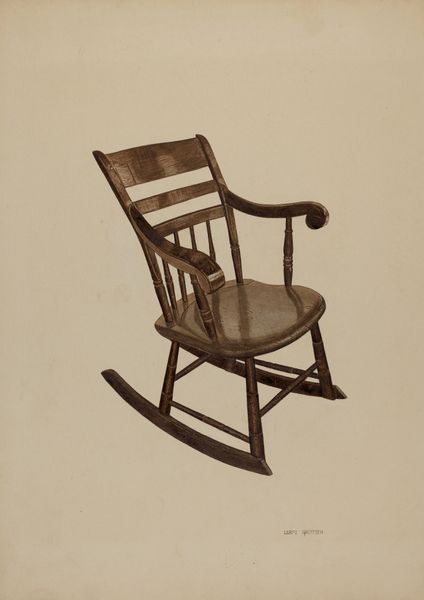
drawing, watercolor
#
portrait
#
drawing
#
water colours
#
watercolor
#
watercolour illustration
#
genre-painting
#
academic-art
#
decorative-art
Dimensions: overall: 30.1 x 22.7 cm (11 7/8 x 8 15/16 in.) Original IAD Object: 32 3/4"high, 17 1/2" front.
Copyright: National Gallery of Art: CC0 1.0
Editor: This is Ferdinand Cartier's "Side Chair," created around 1936. It’s a watercolor drawing. There’s a real sense of crispness, almost a sterile quality to the image. How should we understand its appeal? Curator: It's interesting you use the word "sterile." The rendering of this chair speaks to a very specific moment in the history of design and its relationship to industry. Think about the rise of industrial design in the 1930s. What role did images like this play? Editor: I suppose they were meant to showcase design concepts, perhaps for manufacturers or potential buyers. Curator: Exactly. This watercolor presents a designed object as an ideal, divorced from the messiness of production and the contingencies of everyday life. Consider the historical context: The 1930s saw the rise of consumer culture, heavily shaped by images disseminated through advertising and design journals. This piece, in its own way, participates in that ecosystem. It promotes a certain vision of modern living. Editor: So, it’s not just a chair; it’s about the aspirational lifestyle it represents. The focus on the perfect shape and the fabric, almost suggesting a higher status to someone in society? Curator: Precisely. And think about the medium – watercolor. It’s easily reproducible and lends itself well to illustrations in publications. It speaks to the democratization of design – the idea that good design should be accessible to everyone. But there’s a tension there, isn’t there? Who truly had access to these ideals of modern living? Editor: That tension is fascinating. Seeing it in the context of design history and the socio-economic landscape of the time really changes how I perceive this seemingly simple drawing of a chair. Curator: Exactly. By examining the chair not just as an object but as a visual signifier, we unlock its complex relationship to the broader currents of history.
Comments
No comments
Be the first to comment and join the conversation on the ultimate creative platform.

